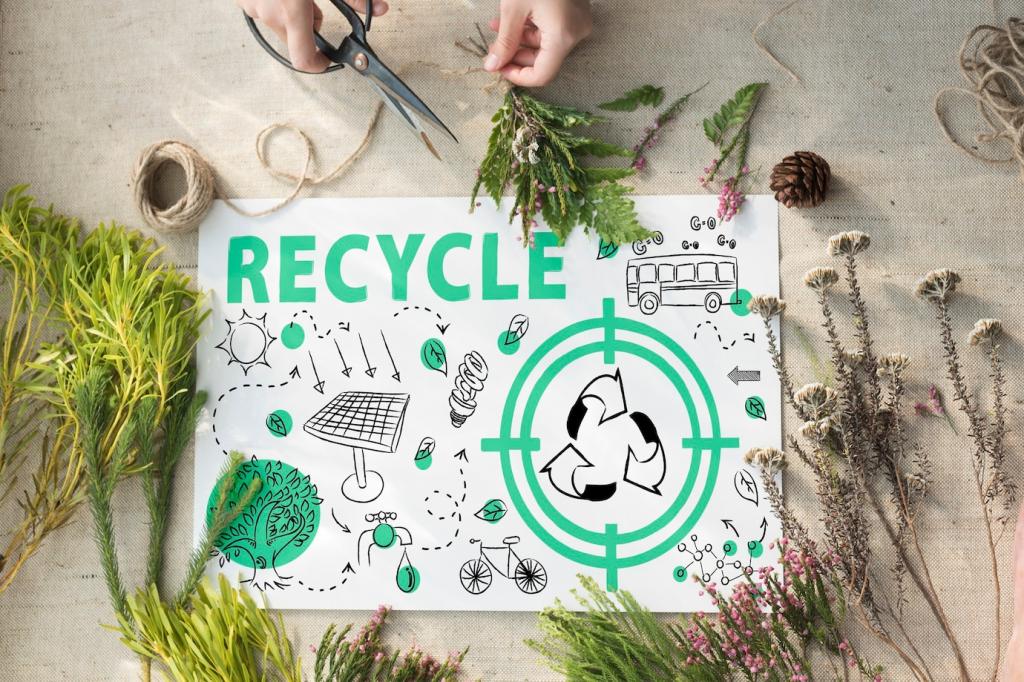Circular Economy and Textile Waste Solutions
Selected theme: Circular Economy and Textile Waste Solutions. Welcome to a hopeful, practical journey where fashion regenerates value, waste becomes a resource, and every garment can have many lives. Join us, share your ideas, and help close the loop together.
Why Circular Economy Matters in Fashion
From Linear to Circular
Traditional fashion extracts resources, produces garments, and discards them quickly. Circular systems design products to be reused, repaired, and remade, transforming waste into feedstock and building resilient, low-impact supply chains that respect finite materials.
The Hidden Cost of Fast Fashion
Millions of tons of textiles end up in landfills or incinerators each year. Beyond cluttered closets, the true cost includes water, energy, and labor embedded in every fiber. Circular strategies ensure those inputs are honored, not squandered.
Anecdote: The Shirt That Lived Twice
A local upcycler rescued an unwanted cotton shirt, mended seams, and overdyed stains. It became a favorite piece for a new owner, then later returned for remanufacture into a tote—two new chapters from one neglected garment.
Designing for Circularity
Prioritize mono-material blends or compatible fibers to simplify recycling. Opt for durable, responsibly sourced cotton, wool, or cellulosics, and avoid problematic mixes that trap value. Designers can reduce trims that hinder disassembly and recovery.
Use stitching and fasteners that can be easily separated. Modular panels, detachable parts, and standardized components allow garments to be repaired quickly or transformed into new styles, keeping materials circulating rather than landfilled.
Build garments to last physically and emotionally. Timeless silhouettes, repair-friendly construction, and thoughtful details help users form attachment, extending wear. Invite customers to customize, mend, and care to deepen that connection over time.

Smart Sorting and Digital Product Passports
Digital IDs and product passports can store fiber data, dye info, and care history, enabling precise sorting and better recycling outcomes. Scannable tags guide garments to the right pathway, reducing contamination and costly manual guesswork.
Mechanical vs. Chemical Recycling
Mechanical recycling shreds and re-spins suitable textiles, often best for pure fibers. Chemical processes can separate blended fabrics, recovering polymers or cellulose. Combining both expands feedstock, turning complex waste into valuable new yarns.
Scaling Infrastructure for Impact
Community drop points, retailer take-back bins, and regional sorting hubs are essential. Public-private partnerships can fund equipment, standardize logistics, and align incentives so more garments find their next life rather than a landfill.
Business Models that Keep Clothes in Use
Certified resale platforms and in-store trade-ins extend product life and grow brand trust. Clear quality standards, cleaning protocols, and fair pricing attract loyal customers who appreciate savings, style variety, and responsible consumption.

Community Action: Closing Loops Locally
Organize a seasonal clothing swap with size zones and repair corners. Invite a local tailor for quick fixes and a textile recycler to collect unwearables. Post photos, tag us, and encourage sign-ups for the next circular gathering.

Policy, Standards, and Accountability
Extended Producer Responsibility
EPR programs require brands to fund collection and processing, encouraging design for recyclability and durability. When producers share end-of-use costs, circular choices become smarter business decisions, not just sustainability slogans.


Product Passports and Labeling
Standardized labeling and digital passports reveal fiber content, chemicals, and repair guidance. Better data yields better outcomes across sorting, recycling, and resale, while helping consumers make informed, circular purchasing decisions every time.
How You Can Start Today

Group items into keep, repair, swap, and recycle. Photograph pieces you love and commit to care routines. Post your plan, tag a friend to join, and subscribe for monthly prompts that keep circular habits engaging and achievable.
